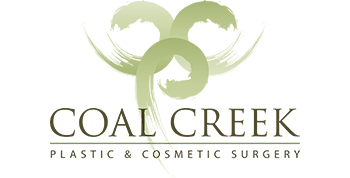Although there are health care providers who may perform some plastic surgery procedures, a certified plastic surgeon is thoroughly trained in cosmetic and reconstructive procedures of all types. The road to becoming a plastic surgeon is a long one, but one that is necessary to provide you with the appropriate care and expertise required. When electing to get plastic surgery or a cosmetic procedure, it’s important to do your research and choose the doctor(s) and practice that is right for you.
It Starts With A BA or BSc Degree
Often referred to as “pre-med,” an undergraduate degree must be completed before a candidate can be accepted into medical school. An undergraduate degree may be in physical sciences, mathematics, social sciences, or even humanities. Medicine is a field that requires many
Medical School
Getting into a medical school is not a walk in the park. Prior to completing an undergraduate degree, a student should take the Medical College Admissions Test (MCAT), collect letters of recommendation from mentors, people of good standing in the community, professors, and plastic surgeons, and fulfill all med school prerequisite requirements. Working in a hospital setting, demonstrating leadership qualities, and participating in extracurricular activities can be helpful in getting accepted to your med school(s) of choice.
Generally, a medical school student will take advanced courses in the sciences during the first 2 years, including pathology, microbiology, pharmacology, biochemistry, physiology, and anatomy. This is followed by two years of clinical rotations, where students gain hands-on experience with patients in a variety of professional medical settings. Students can earn a Medical Doctor degree (M.D.), or if a student chooses to attend an osteopathic medical school, he or she will earn a Doctor of Osteopathic Medicine (D.O.) degree.
The Medical License & Residencies
To practice medicine in the United States, all doctors must hold a medical license. Medical doctors (M.D.s) must pass the United States 
After completing medical school, postgraduates begin a five- to six-year plastic surgery residency accredited by the Accreditation Council for Graduate Medical Education. Residency programs are when the training is specific to a student’s chosen specialty, so an aspiring plastic surgeon would choose a plastic surgery residency. Residents typically attend lectures, participate in patient rounds with a licensed plastic surgeon, and complete clinical case studies. Training in reconstructive and cosmetic plastic surgery includes:
- Fundamentals of surgery (wound healing, nutrition, intensive care)
- Fundamentals of plastic surgery (wound care, flaps, implants/biomaterials, lasers)
- Pediatric/Craniofacial (head/neck/face) surgery
- Microsurgery
- Hand surgery, upper and lower extremity reconstruction, peripheral nerve surgery
- Breast surgery (reconstructive/post-cancer and aesthetic/cosmetic)
- Trunk reconstruction including complex hernias, chest wall, and genital reconstruction
- Skin and soft tissue cancer procedures
- Burns and trauma surgery (to treat traumatic injuries resulting from car accidents, sporting injuries, and violent incidents)
- Aesthetic/cosmetic surgical techniques including lasers, injectables, and minimally invasive techniques
- Otoplasty (to treat protruding ears)
- Blepharoplasty (eyelid surgery)
- Emerging areas (hand and face transplant immunology)
Fellowships & Specialized Training
If a doctor chooses to specialize, they may choose to complete a one-year fellowship program. Post-residency fellowships offer doctors the opportunity to work with a practicing surgeon in a private practice office.
The primary plastic surgery subspecialties are:
- Aesthetic/Cosmetic plastic surgery
- Reconstructive surgery
- Craniofacial surgery
- Reconstructive microsurgery
- Pediatric plastic surgery
- Laser surgery
- Hand surgery
Beyond medical procedures, a new doctor can learn about the business, how to choose staff and assign responsibilities, set up an office, and experience issues doctors may face in order to grow their private practice. A fellowship doctor guides and advises a new plastic surgeon while providing practical insight into setting up a successful private practice.
Certifications
As you can see, plastic surgery training includes sixteen plus years of post-high school education, including specific training in reconstructive and cosmetic plastic surgery under direct supervision. Board-certified plastic surgeons have not only met these very demanding requirements, but they have also successfully passed a written exam and a 2-day oral exam which evaluates their knowledge, ethical standing, and safe and effective approach to reconstructive and cosmetic challenges.
Board certification by the American Board of Medical Specialties (ABMS) indicates a surgeon has completed a required set of education and training requirements beyond the minimum requirements for obtaining licensure. It also shows a surgeon has passed exams in his or her specialty. The American Board of Plastic Surgery certification exams must be taken within 8 years of completing medical residency.
All specialties require Maintenance of Certification (MOC), which requires a doctor to complete specified continuing education, ensuring that your surgeon’s procedures and techniques are current and up-to-date.
Click a link for more information on Dr. Herrmann‘s education, training, and background.
Ready to schedule your consultation? Click here.
Sources:




